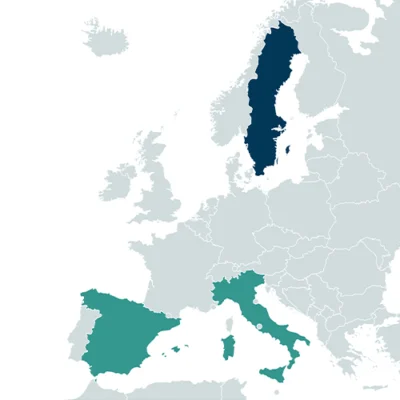
Optimal rewilding of crop-bodyguard interactions facilitating the green transformation of agriculture
Call
Duration
01/04/2025 – 31/03/2028
Total grant
Approx. 880 thsd. €
More information
Johan A. Stenberg, johan.stenberg@slu.se
www.WildCrop.org
@NBS_WildCrop
Partners of the project
- Department of Plant Protection Biology, Swedish University of Agricultural Sciences, Alnarp, Sweden
- Department of Agriculture, Food, Environmental and Animal Sciences, University of Udine, Udine, Italy
- Department of Biochemistry and Molecular Biology, University of Málaga, Málaga, Spain

Context
The use of chemical pesticides in agriculture comes at the price of significant biodiversity losses and human wellbeing: (1) Plant breeding for increased resistance and (2) biocontrol using beneficial microorganisms are two main alternative methods to combat pests and pathogens, but these methods have not yet been simultaneously optimised for maximal synergy.
Main objectives
This project will establish a new framework for mapping wild resources for plant resistance and biocontrol in natural populations across Europe and subsequently harnessing and combining these resources for maximal synergies to reduce pesticide dependence and thus mitigate biodiversity loss. Wild strawberry (Fragaria vesca) and its “microbial bodyguard” Aureobasidium pullulans will be used as model system.
Main activities
Wild strawberry plants sampled from >200 populations across Europe will be screened for their resistance against grey mould disease and the plant metabolites involved in resistance will be identified. Similarly, A. pullulans strains isolated from all these plants will be screened for their biocontrol potential and the metabolites involved in biocontrol will be identified. Bioclimatic analyses will then be performed to predict geographic locations where evolutionary hotspots for highest resistance and biocontrol potential can be mined.
Following in vitro and lab screening, living labs will be established in Italy and Sweden where potential synergies and trade-offs between resistance and biocontrol will be studied in the field. These living labs will be used to facilitate interactions between scientists, farmers, plant breeders, and biocontrol companies. Two workshops with plant breeders and biocontrol companies will be held.
We expect the project to contribute to the development of more resistant strawberry cultivars and more efficient biocontrol products. We further expect the project to contribute to the development of the new concept of “breeding for biocontrol” and established collaboration between plant breeders and biocontrol companies. Such developments will provide significantly improved crop protection, and thus less dependence on chemical pesticides, thus mitigating biodiversity losses and adverse effects on human wellbeing.